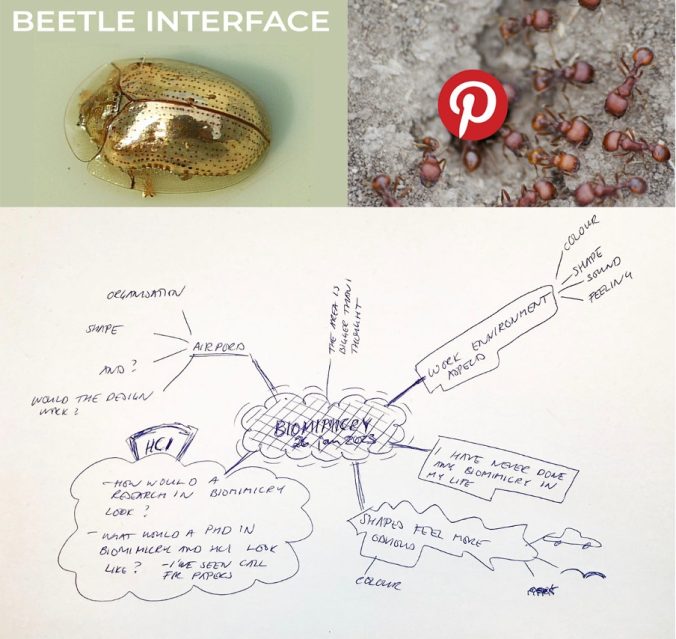As technology continues to evolve, so do the ways people interact with it. From wearables and voice-based systems to virtual and augmented reality (VR and AR), sensors, and artificial intelligence (AI), human interaction with digital systems has transformed drastically. Simultaneously, urgent challenges affecting the health of the planet, including climate change, biodiversity loss, and inequality, has made the role of research and design in transformative change increasingly important as we pursue a sustainable, just and resilient future. These transformations push the boundaries of Human-Computer Interaction (HCI), as it necessitates the integration of the many different ways people engage with technology. Biomimicry, or biometrics, the practice of emulating forms, functions, and systems found in nature (Vincent et al., 2006), offers a unique approach to designing HCI systems that are intuitive, regenerative, and sustainable.
Why Biomimicry for HCI?
Biomimicry invites HCI researchers and designers to rethink interactions with technologies. Beyond inspiring new design aesthetics, biomimicry offers insights into designing systems that process data intuitively, sends and receives signals, respond dynamically, and adapt as living organisms do within their ecosystems. By applying design principles abstracted from nature, HCI researchers and designers can create systems that are more adaptable, environmentally responsive, and seamlessly integrated with users’ surroundings. When we incorporate these adaptive strategies into HCI, we can create interfaces that are more intuitive and efficient, using fewer resources and contributing to a regenerative approach to technology. Nature is a network of adaptive interfaces that continuously sense, process, and respond to environmental signals. Imagine if our digital systems could similarly evolve and adapt based on changes in their environment.
Workshop Highlights: Exploring Nature’s Blueprint for HCI
At two recent “Biomimicry for HCI” workshops at Uppsala University, participants delved into nature’s models of sensing, processing, and adapting to information, discovering ways to inspire “living” interfaces. In such interfaces, information is not merely displayed but dynamically revealed in response to environmental cues. The workshops aimed to:
- Bridge biomimicry and HCI: Participants brainstormed and conceptualized interfaces inspired by natural, organic processes.
- Go beyond screen-based interaction: Moving away from traditional, screen-centered designs, they considered how natural systems communicate, sense, and process data.
- Design for sustainability and intuitiveness: By translating nature’s efficient, adaptive mechanisms, participants envisioned HCI systems that are integrated within their environments, where users interact with a system that feels responsive and organically integrated.
Conclusion: Toward a Biomimicry-Inspired HCI
The workshops offered new perspectives on designing HCI systems that emulate models found in nature. By emulating nature’s strategies for adaptation and sustainability, we can create HCI systems that are not only intuitive but also deeply integrated with their environments. This reframing encourages researchers and designers to approach interfaces as living entities that, like natural systems, process and adapt to sensory data fluidly, responding to users as ecosystems respond to environmental cues. Nature does more than aesthetically inspire, it offers models for creating HCI frameworks where the interface itself becomes a dynamic, living system, continuously adapting to and engaging with its surroundings.
In the rapidly evolving field of HCI, biomimicry offers an approach beyond conventional screen-based interaction toward a future where interfaces breathe, respond, and co-exist in harmony with the natural world.
If you are interested in exploring ideas in biomimicry for HCI, please reach out to Karin van den Driesche at c.j.h.m.vandendriesche@uva.nl or info@kadendesign.nl. Additionally, you can download the worksheet, Biomimicry Using Shape Change in Nature, for a hands-on approach: Download Worksheet.



